In the vast and ever-expanding universe of artistic expression, digital art has unequivocally taken center stage, redefining creative boundaries and democratizing the tools of creation. What once began as a niche medium confined to specialized studios has blossomed into a ubiquitous force, influencing everything from mainstream entertainment and advertising to fine art galleries and personal expression. This comprehensive article delves into the profound impact of digital art, exploring its historical ascent, the transformative technologies that fuel its evolution, and its diverse manifestations across a myriad of creative disciplines. We’ll uncover how artists, designers, and innovators are leveraging digital tools to craft captivating visuals, push the limits of imagination, and forge new connections with audiences worldwide.
A Brief History of Digital Art
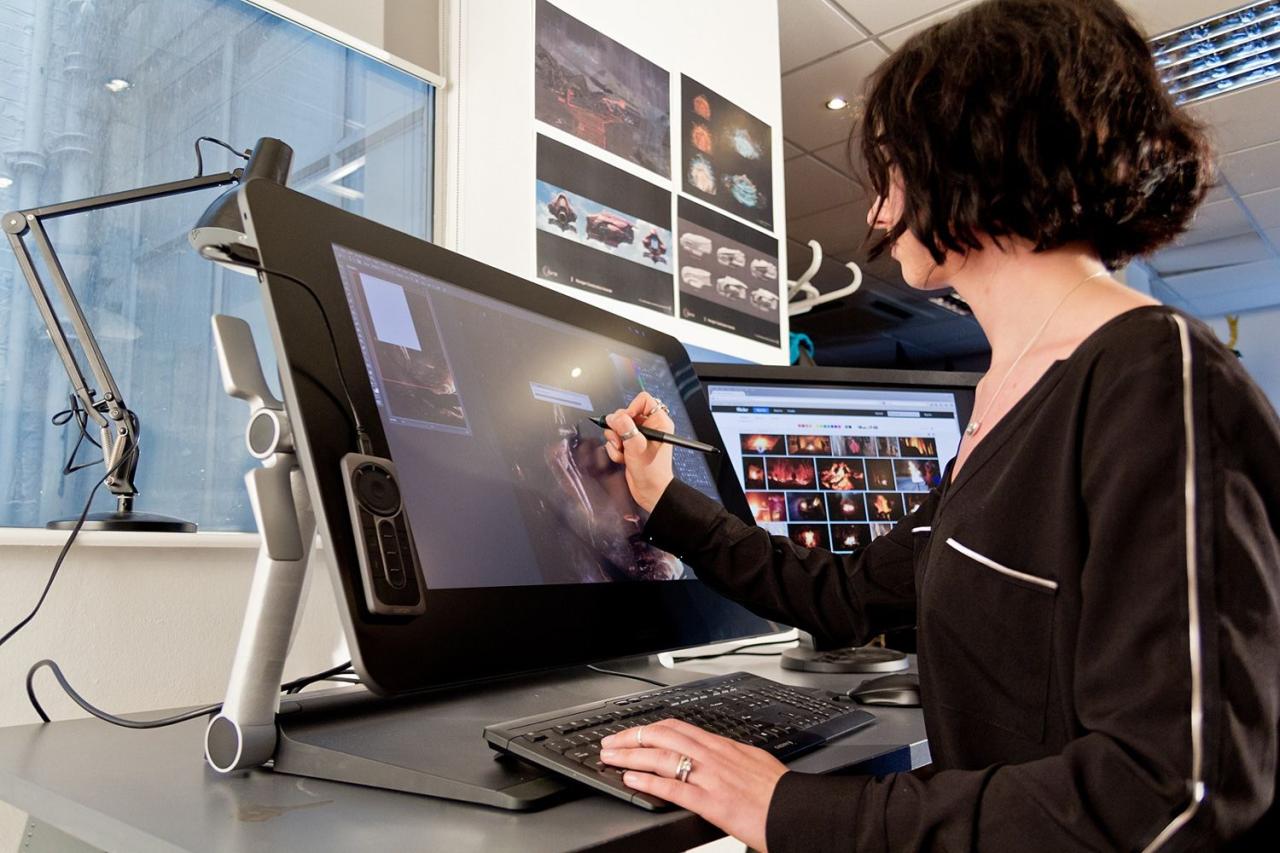
The genesis of digital art is intertwined with the evolution of computing itself, evolving from rudimentary graphics to highly sophisticated virtual realms.
A. Early Experiments and Computer Graphics (1950s-1960s): The earliest forms of digital art emerged from scientific and engineering contexts. Researchers at Bell Labs, Boeing, and universities began experimenting with computers to generate abstract patterns, mathematical visualizations, and basic line drawings using plotters and early display screens. Think of the “S-Curve” by Bell Labs’ A. Michael Noll in 1962, one of the first computer-generated artworks.
B. The Rise of Graphics Terminals (1970s): As computing power increased, dedicated graphics terminals became more accessible. Artists and researchers explored vector graphics and early raster graphics, leading to more complex abstract art, wireframe models, and character-based animations. University environments were often hubs for this early exploration.
C. Desktop Publishing and Personal Computers (1980s): The introduction of personal computers like the Apple Macintosh and the development of software like MacPaint, Photoshop (originally ImagePro), and Illustrator revolutionized graphic design. Artists could now create and manipulate images digitally on their desktops, making digital art accessible to a broader audience outside of specialized labs. This era saw the rise of pixel art and early digital painting.
D. The Internet and Multimedia Boom (1990s): The advent of the World Wide Web provided a new platform for sharing digital art globally. CD-ROMs fueled interactive multimedia experiences, and software like Macromedia Flash enabled web animations and interactive art. This period saw a rise in web art and early forms of net art.
E. 3D Graphics and Gaming (Late 1990s-2000s): Advances in graphics cards and 3D modeling software led to realistic 3D animation, visual effects in film, and immersive video games. Digital sculpting and photorealistic rendering became commonplace, profoundly influencing architectural visualization and product design.
F. Mobile Devices and Generative Art (2010s-Present): The proliferation of smartphones and tablets turned everyone into a potential digital artist with powerful mobile apps. Concurrently, advancements in artificial intelligence and machine learning fueled the rise of generative art, where algorithms create unique and often complex artworks autonomously or in collaboration with humans. Non-Fungible Tokens (NFTs) further revolutionized how digital art is owned and traded, creating a new digital economy for artists.
This historical arc demonstrates digital art’s relentless drive towards greater accessibility, realism, and creative autonomy, setting the stage for its central role in today’s creative ecosystem.
Technologies Powering Artistic Expression
The vibrancy of digital art is inextricably linked to the rapid advancements in underlying technologies, providing artists with an ever-expanding palette of tools and capabilities.
I. Software Innovation
The diversity and sophistication of digital art software are staggering, offering unparalleled control and creative freedom.
A. Raster Graphics Editors: Programs like Adobe Photoshop, Corel Painter, and Clip Studio Paint allow for pixel-based image manipulation, digital painting, photo retouching, and compositing, mimicking traditional painting and drawing techniques.
B. Vector Graphics Editors: Software such as Adobe Illustrator, Affinity Designer, and Inkscape enable the creation of scalable graphics composed of mathematical paths, ideal for logos, illustrations, and intricate line art that can be resized without loss of quality.
C. 3D Modeling and Rendering Software: Tools like Autodesk Maya, Blender, ZBrush, and Cinema 4D facilitate the creation of three-dimensional objects, characters, and environments, complete with textures, lighting, and realistic rendering. Advances in real-time rendering are particularly transformative here.
D. Animation and Motion Graphics Software: Programs like Adobe After Effects, Toon Boom Harmony, and TVPaint bring digital art to life through 2D and 3D animation, visual effects, and dynamic motion graphics for film, television, and web.
E. Generative Art and Coding Platforms: Environments like Processing, TouchDesigner, and various AI art generators (e.g., Midjourney, DALL-E, Stable Diffusion) allow artists to use code, algorithms, or natural language prompts to create art, pushing the boundaries of algorithmic aesthetics.
F. Digital Sculpting Software: Programs like ZBrush and Sculptris allow artists to sculpt virtual clay with high fidelity, creating organic shapes and detailed models with intuitive brush-based tools.
G. Virtual Reality (VR) and Augmented Reality (AR) Creation Tools: Software like Tilt Brush, Gravity Sketch, and Adobe Aero enable artists to create 3D art directly within immersive virtual environments or overlay digital art onto the real world.
The continuous evolution of these software tools empowers artists to execute visions previously unimaginable, often blurring the lines between different art forms.
II. Hardware Advancements
Powerful hardware is essential for realizing complex digital art, providing the processing power and tactile interface artists need.
A. Graphics Processing Units (GPUs): High-performance GPUs are the backbone of modern digital art, accelerating rendering, real-time preview, and complex simulations, making demanding tasks feasible for individual artists.
B. Drawing Tablets and Pen Displays: Wacom Cintiqs, Huion tablets, and Apple Pencils offer pressure sensitivity and precision, mimicking the feel of traditional drawing tools and providing intuitive control over digital brushes.
C. High-Resolution Displays and Color Accuracy: 4K and 8K monitors with wide color gamuts allow artists to see their work with incredible detail and accurate color representation, crucial for professional output.
D. Virtual Reality (VR) and Augmented Reality (AR) Headsets: Devices like Meta Quest, Valve Index, and Apple Vision Pro provide immersive platforms for creating and experiencing digital art in 3D space.
E. 3D Printers and CNC Machines: For digital sculptors and product designers, these machines translate digital 3D models into physical objects, blurring the line between digital creation and tangible art.
F. High-Speed Storage and Cloud Computing: Rapid access to large files and the ability to leverage cloud-based rendering farms accelerate workflows for demanding digital art projects.
These hardware innovations reduce latency, improve fidelity, and broaden the scope of what digital artists can create and experience.
III. Connectivity and Distribution
The internet and decentralized technologies have transformed how digital art is shared, consumed, and owned.
A. Online Art Platforms: Websites like ArtStation, DeviantArt, Behance, and Instagram serve as vast galleries and communities for digital artists to showcase their work, gain exposure, and connect with peers and clients.
B. Non-Fungible Tokens (NFTs): NFTs on blockchain networks have provided a unique solution for digital art ownership, verifiable scarcity, and direct artist-to-collector sales, creating a new economic model for digital creators.
C. Streaming and Interactive Media: Platforms like Twitch and YouTube allow artists to live-stream their creative process, engaging audiences directly. Interactive web experiences and dynamic art installations utilize real-time data and user input for evolving artworks.
D. Cloud-Based Collaboration Tools: Software that allows multiple artists to work on the same digital art project simultaneously from different locations, fostering global collaboration.
E. Virtual Galleries and Metaverses: Immersive virtual spaces (e.g., Decentraland, The Sandbox, or dedicated VR art galleries) provide new venues for exhibiting and experiencing digital art in an interactive, 3D environment.
F. Social Media as Art Portfolios: Platforms like TikTok, Instagram, and Pinterest enable artists to rapidly share short-form content, time-lapses of their process, and finished pieces, reaching massive audiences and influencing trends.
Digital connectivity has made the art world truly global, removing geographical barriers and democratizing access for both creators and consumers.
Digital Art’s Transformative Influence Across Creative Disciplines
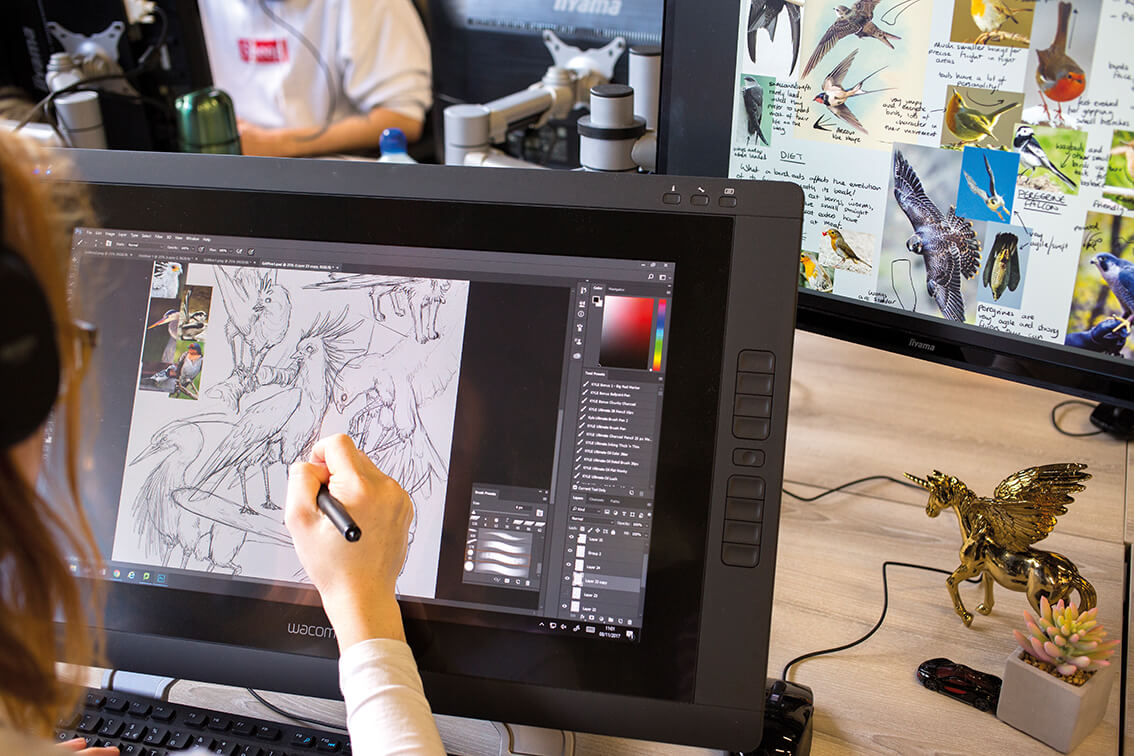
Digital art’s pervasive influence is reshaping traditional creative fields and birthing entirely new ones.
I. Illustration and Concept Art
Digital tools have become the industry standard for illustration and concept art, accelerating workflows and expanding creative possibilities.
A. Speed and Iteration: Artists can rapidly sketch, color, and refine ideas, allowing for quick iteration and exploration of multiple concepts—crucial for industries like gaming and film.
B. Non-Destructive Workflow: Digital layers, undo/redo functions, and adjustable brushes allow for experimentation without permanent commitment, encouraging creative freedom.
C. Vast Brush Libraries and Textures: Access to an endless array of custom brushes, textures, and reference photos allows for unparalleled stylistic versatility, mimicking any traditional medium.
D. 3D Integration: Concept artists increasingly use basic 3D models as foundations for their paintings, allowing for accurate perspective, lighting, and rapid scene construction.
E. Concept to Production Pipeline: Digital concept art seamlessly integrates into subsequent production stages, serving as blueprints for 3D modelers, animators, and visual effects artists.
Digital illustration has democratized the ability to visualize complex worlds and characters with speed and precision.
II. Graphic Design and Branding
In graphic design and branding, digital art provides dynamic tools for creating compelling and adaptable visual communication.
A. Scalable Vector Graphics: Digital vector art ensures logos and brand elements remain crisp and clear at any size, from a favicon to a billboard.
B. Motion Graphics and Animated Logos: Digital animation techniques allow for dynamic logos, engaging intros, and explanatory videos that bring brands to life across digital platforms.
C. Interactive and Responsive Design: Digital art assets (icons, illustrations, UI elements) are designed to be responsive, adapting to different screen sizes and user interactions, creating fluid user experiences.
D. Digital Collages and Photomanipulation: Advanced digital tools enable sophisticated photo compositing, creating surreal or highly stylized visual narratives for advertising and editorial design.
E. Generative Branding Elements: AI can generate unique patterns, textures, or even customizable brand assets, offering endless variations while maintaining brand consistency.
Digital art empowers graphic designers to create rich, interactive, and highly versatile brand identities suitable for the digital age.
III. Film, Animation, and Visual Effects (VFX)
The entertainment industry is heavily reliant on digital art, where it creates impossible worlds and breathtaking visual spectacles.
A. 3D Animation: From character modeling and rigging to animation and rendering, digital tools are fundamental to modern animated films and series.
B. Visual Effects (VFX): Digital artists create everything from realistic explosions and fantastical creatures to entire digital environments, seamlessly integrating them into live-action footage.
C. Digital Cinematography and Virtual Production: Advanced game engines are now used in real-time on film sets for virtual production, allowing directors and actors to see digital environments and characters live during filming, revolutionizing filmmaking workflows.
D. Character Design and Creature Creation: Digital sculpting and painting allow artists to design and realize highly detailed and expressive characters and creatures.
E. Matte Painting and Environment Art: Digital painters create expansive, photorealistic backdrops and fantastical landscapes that form the settings for films and games.
Digital art has given filmmakers the power to bring any vision, no matter how imaginative, to life on screen.
IV. Gaming and Virtual Worlds
Digital art is the very fabric of video games and virtual realities, creating immersive, interactive experiences.
A. 3D Environment and Character Art: Artists create the detailed models, textures, and lighting for entire game worlds, characters, and assets, often in collaboration with designers and programmers.
B. Concept-to-Game Assets: Digital art workflows transform initial sketches into optimized 3D models and textures ready for game engines, ensuring performance and visual fidelity.
C. User Interface (UI) Art: Designing the interactive menus, heads-up displays (HUDs), and in-game iconography that guide player interaction.
D. Animation and Special Effects: Digital artists create character animations, particle effects, and environmental shaders that bring dynamism and realism to game worlds.
E. Procedural Content Generation: AI and algorithms are used to automatically generate vast amounts of game art (e.g., terrains, foliage, building layouts) to populate large open worlds efficiently.
Digital art is central to creating the rich, believable, and compelling experiences that define modern gaming.
V. Fashion and Textile Design
Even the traditionally tactile world of fashion is embracing digital art for its efficiency and creative potential.
A. 3D Garment Design: Software allows designers to create, drape, and animate clothing in 3D, testing patterns and fit digitally before physical production, reducing waste and time.
B. Digital Textile Printing: Creating intricate, custom patterns and graphics directly onto fabrics with high precision and vibrant colors, enabling unique and on-demand production.
C. Virtual Avatars and Fashion Shows: Digital avatars are used to model clothing in virtual fashion shows or for online retail, showcasing garments in dynamic digital environments.
D. AR Try-On: Augmented Reality apps allow users to virtually “try on” clothes and accessories using their smartphone cameras, enhancing the online shopping experience.
E. Generative Fashion Patterns: AI can create unique and complex fabric patterns or garment designs, pushing creative boundaries beyond human intuition.
Digital art is streamlining the fashion design process, reducing environmental impact, and opening new avenues for creativity and consumer engagement.
Future Horizons for Digital Art
The future of digital art is poised for even more dramatic transformations, driven by burgeoning technologies and evolving artistic paradigms.
A. AI as a Creative Partner: AI will become an even more sophisticated collaborator, assisting artists with ideation, generating complex elements, or even creating fully realized artworks that require human curation and direction. The role of the “prompt engineer” or “AI art director” will grow.
B. Seamless Mixed Reality Creation: Artists will intuitively create directly within combined virtual and physical spaces, with AR and VR tools becoming as natural as a pen and paper, blurring the lines between digital and tangible art forms.
C. Democratization of High-End Tools: As software becomes more intuitive and hardware more affordable, sophisticated digital art creation will become accessible to an even broader global community, fostering immense diversity in expression.
D. Dynamic and Evolving Artworks: Digital art will increasingly be non-static, responding to real-time data (e.g., weather, stock market, social media trends), user interaction, or environmental conditions, creating living, breathing artworks.
E. Sustainable Digital Art: Exploration into optimizing rendering processes, reducing the energy footprint of NFTs, and using digital tools to reduce waste in physical production will become increasingly important.
F. Neural Interfaces for Creation: Looking further ahead, brain-computer interfaces could allow artists to manifest ideas directly from their thoughts into digital forms, though this is still largely theoretical.
G. The Metaverse as a Canvas: The development of interconnected virtual worlds will create unprecedented opportunities for immersive digital art installations, performances, and interactive experiences on a global scale.
Conclusion
Digital art is not just a medium; it’s a new language for creativity, constantly evolving and pushing the boundaries of what art can be. Its ascent to the center stage is a testament to its boundless potential to captivate, communicate, and innovate, shaping the visual and experiential landscape of our future.

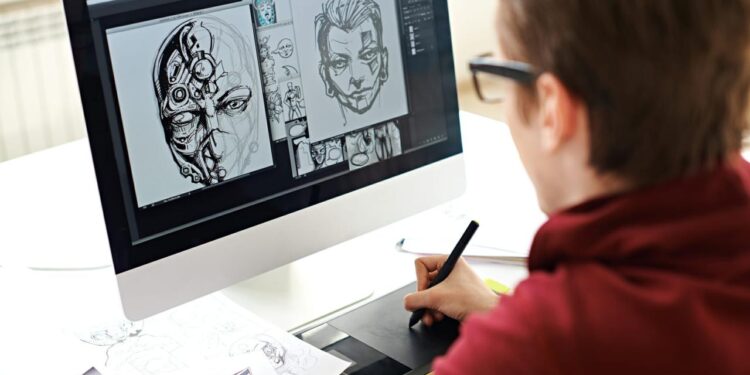
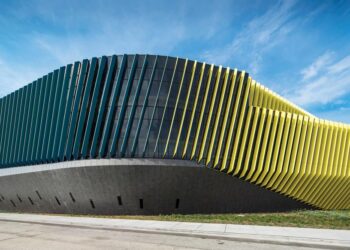


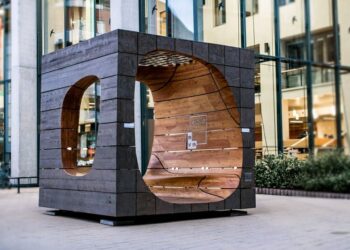

Discussion about this post